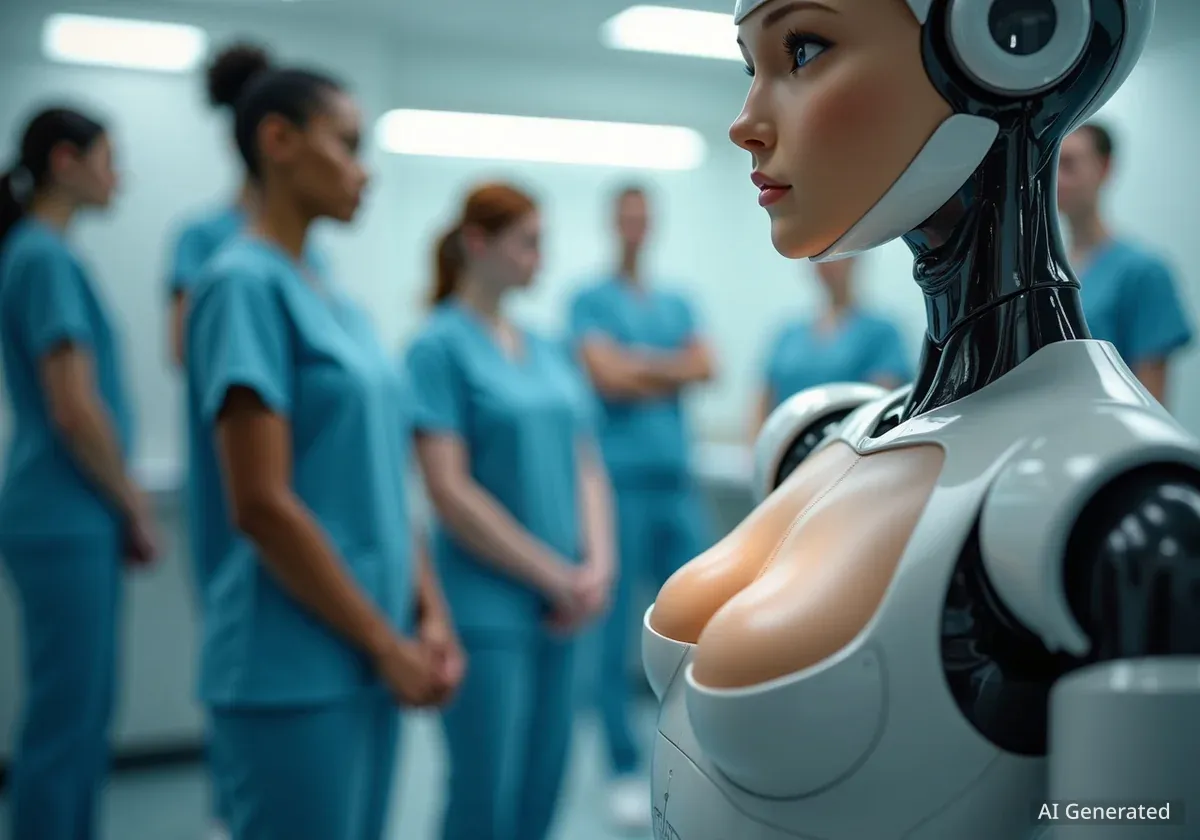South College-Asheville is transforming its healthcare education with the introduction of advanced AI-powered simulation manikins. This new technology provides nursing students with highly realistic, hands-on training by simulating complex medical scenarios in a controlled environment, bridging the critical gap between classroom theory and real-world patient care.
Key Takeaways
- South College-Asheville has integrated AI-enabled manikins into its nursing curriculum to enhance practical skills training.
- These advanced simulators can mimic human physiology, respond to voice commands, and verbally answer questions about their medical history.
- The technology allows students to practice complex procedures and critical decision-making on lifelike patient models without risk to actual patients.
- Instructors report a significant technological leap from previous training methods, offering a more dynamic and interactive learning experience.
A New Standard in Clinical Simulation
South College-Asheville recently showcased its latest investment in healthcare education: a fleet of AI-powered manikins designed to simulate human patients with remarkable accuracy. These are not the static models of the past. The new simulators represent a significant leap forward in medical training technology.
Equipped with sophisticated internal mechanisms and software, the manikins can replicate a wide range of physiological functions. They can breathe, exhibit a pulse, and produce realistic heart and lung sounds. This level of detail allows students to perform physical assessments just as they would on a human patient.
From Passive Models to Interactive Patients
Traditional nursing education has long used manikins for practicing basic skills like CPR or injections. However, those models were typically passive. The new generation of AI simulators creates an interactive learning environment where the "patient" actively participates in the training scenario, forcing students to think critically and adapt their approach in real time.
The most groundbreaking feature is their artificial intelligence integration. The manikins can engage in basic conversation, answering questions about their symptoms and medical history. They are also programmed to respond to voice commands from students, creating a dynamic and immersive training scenario that closely mirrors actual clinical encounters.
Hands-On Training for High-Stakes Scenarios
During a recent demonstration, senior nursing students at the college were tasked with managing a patient experiencing a seizure. The AI manikin realistically mimicked the physical convulsions and physiological changes associated with the condition, providing a high-pressure but safe environment for the students to practice their response.
This ability to simulate high-stakes medical emergencies is a core benefit of the technology. Students can gain confidence and competence in handling critical events that they might not encounter frequently during their clinical rotations. Scenarios can be programmed to include cardiac arrest, allergic reactions, respiratory distress, and other urgent situations.
An instructor at the college noted the profound difference between this new technology and the tools she used during her own training, highlighting the immense educational advantage today's students receive.
The simulations are controlled by an instructor in a separate room, who can adjust the manikin's vital signs and responses based on the students' actions. This allows for customized learning experiences tailored to specific educational objectives. After each simulation, instructors can lead a debriefing session, using recorded video and data from the manikin to review performance and reinforce key concepts.
Key Capabilities of AI Manikins
- Verbal Interaction: Can answer questions about symptoms and medical history.
- Physiological Response: Mimics breathing, heart rate, blood pressure, and other vital signs.
- Voice Command Recognition: Responds to student instructions, such as "open your eyes."
- Realistic Movements: Simulates seizures, blinking, and other physical actions.
Bridging the Gap Between Classroom and Clinic
The primary goal of this technology is to better prepare students for the complexities of patient care. By practicing in a simulated environment, they can make mistakes, learn from them, and refine their skills without any risk to human life. This builds a foundation of confidence and competence before they even step into a hospital or clinic.
Students at South College-Asheville have been working with the new manikins for approximately four months. This extended exposure allows them to move beyond basic skills and tackle more nuanced aspects of patient care, such as communication, teamwork, and critical thinking under pressure.
The ability of the manikins to talk and respond adds a crucial layer of realism. Healthcare is not just about performing technical procedures; it involves building rapport with patients, gathering information through conversation, and providing clear instructions. The AI simulators allow students to practice these essential "soft skills" alongside their clinical techniques.
The Future of Healthcare Education in Asheville
The adoption of AI simulation technology by South College positions its healthcare programs at the forefront of modern educational practices. As medical technology continues to evolve, training methods must keep pace to ensure that new graduates are prepared for the demands of the profession.
This investment reflects a broader trend in medical and nursing education. Institutions across the country are increasingly turning to high-fidelity simulation to provide standardized, repeatable, and safe learning experiences. It allows educators to ensure every student is exposed to critical scenarios, rather than leaving such encounters to chance during clinical placements.
For the Asheville community and the wider Western North Carolina region, this means a new generation of nurses and healthcare professionals will enter the workforce with a higher level of practical experience and confidence. This advanced training ultimately contributes to enhanced patient safety and improved quality of care in local healthcare facilities.





